Pan-seared chunks of white fish are coated in a syrupy, spicy lime sauce in this dish based on pla tort sahm rot, a traditional Thai street stall favourite. It tastes a bit like a fish version of everybody’s favourite Chilli Garlic Prawns. Very quick to make, it’s loaded with big flavours!
This recipe is an reworked version of a cookbook reject. Read the back-story below!
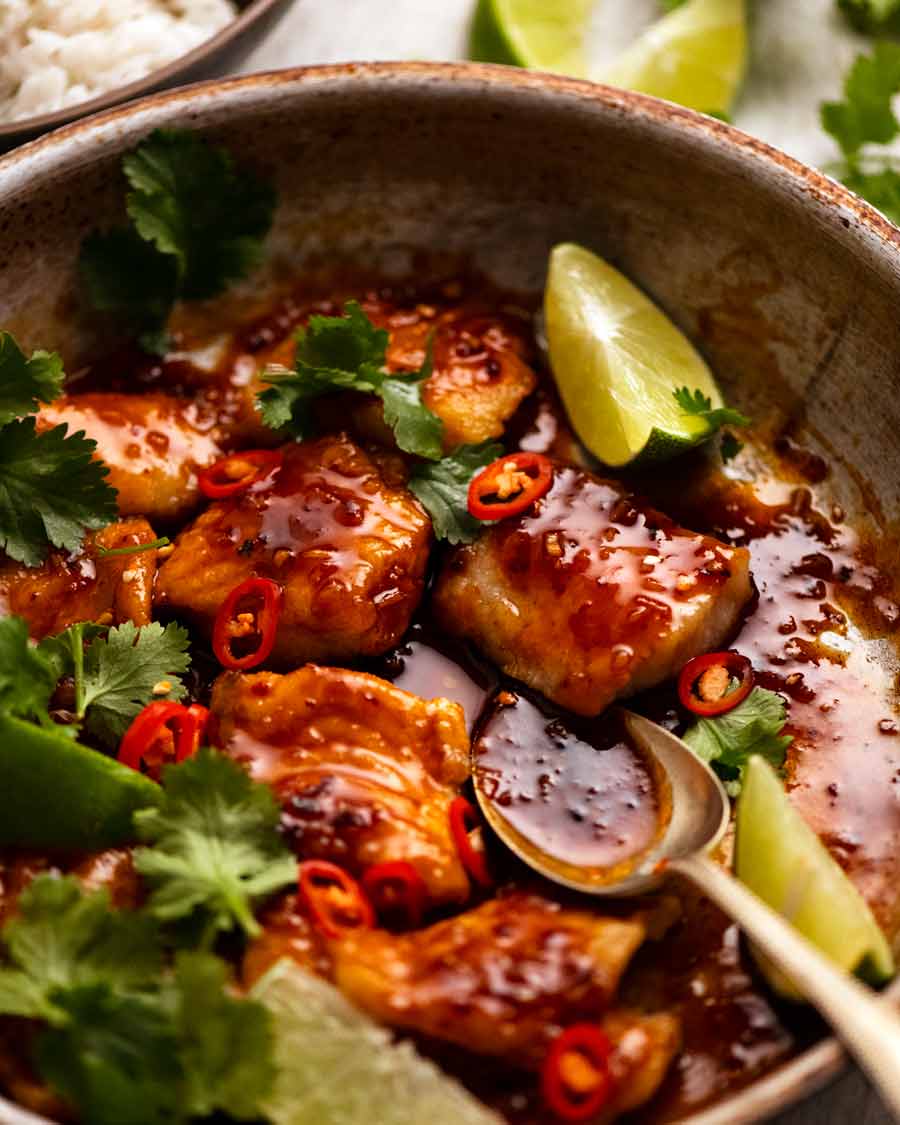
From the cookbook cutting room floor …
This recipe grew out of an infamous fish recipe draft that didn’t make it into my cookbook. I say “infamous” because after my brother was asked to try the draft recipe, he returned blunt feedback declaring, “There is nothing about this recipe that I like.”
BRUTAL!! 😂😂😂
The ruthlessness of this comment that only family can give to one another had the whole team in stitches – especially after I lost my nerve and decided to pull it from the book even after I “fixed” it for him. And to be fair, he did follow up his “constructive feedback” with suggestions of what he thought needed to be done to improve it.
And so here it is today, back from the dead: Originally a cookbook reject but reworked, polished and finally approved by someone everyone. I’m sharing it with you now to also enjoy!
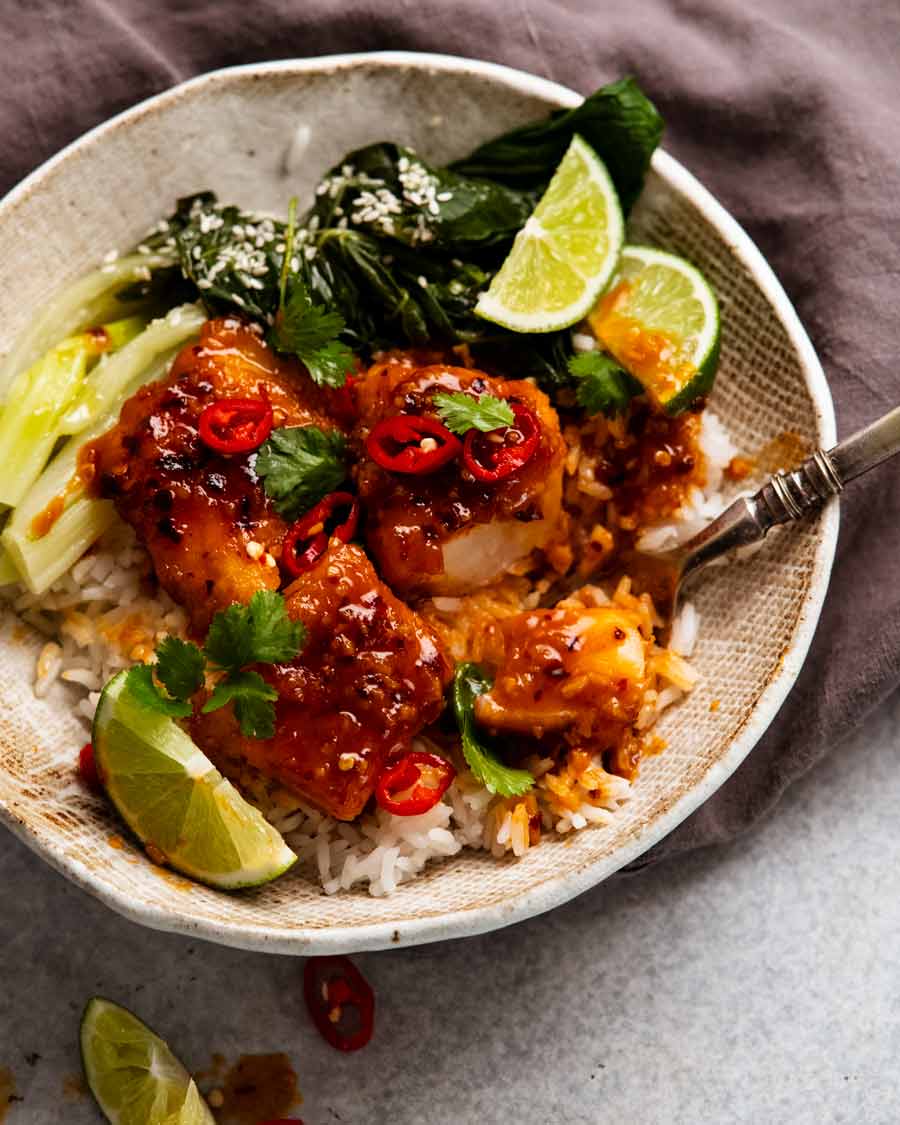
What this Chilli Lime Fish tastes like
This recipe is loosely based on a sweet-and-spicy Thai fish dish you find served by street vendors across Thailand. Called pla tort sahm rot, the name means “three-flavoured sauce” – the flavours being sweet, savoury and sour. I tried this delicious classic on my last trip to Bangkok (pictured below) at a lunchtime food court jammed with hungry locals.
Traditionally the fish is deep-fried before being smothered with a an irresistible, sticky red sauce made with palm sugar, fish sauce, tamarind, chilli and holy basil. My recipe is essentially a streamlined home-cook version that substitutes ingredients I usually have in the pantry such as sriracha, brown sugar, lime. Also, I skip the deep-fry and just pan-fry – healthier, easier and quicker!

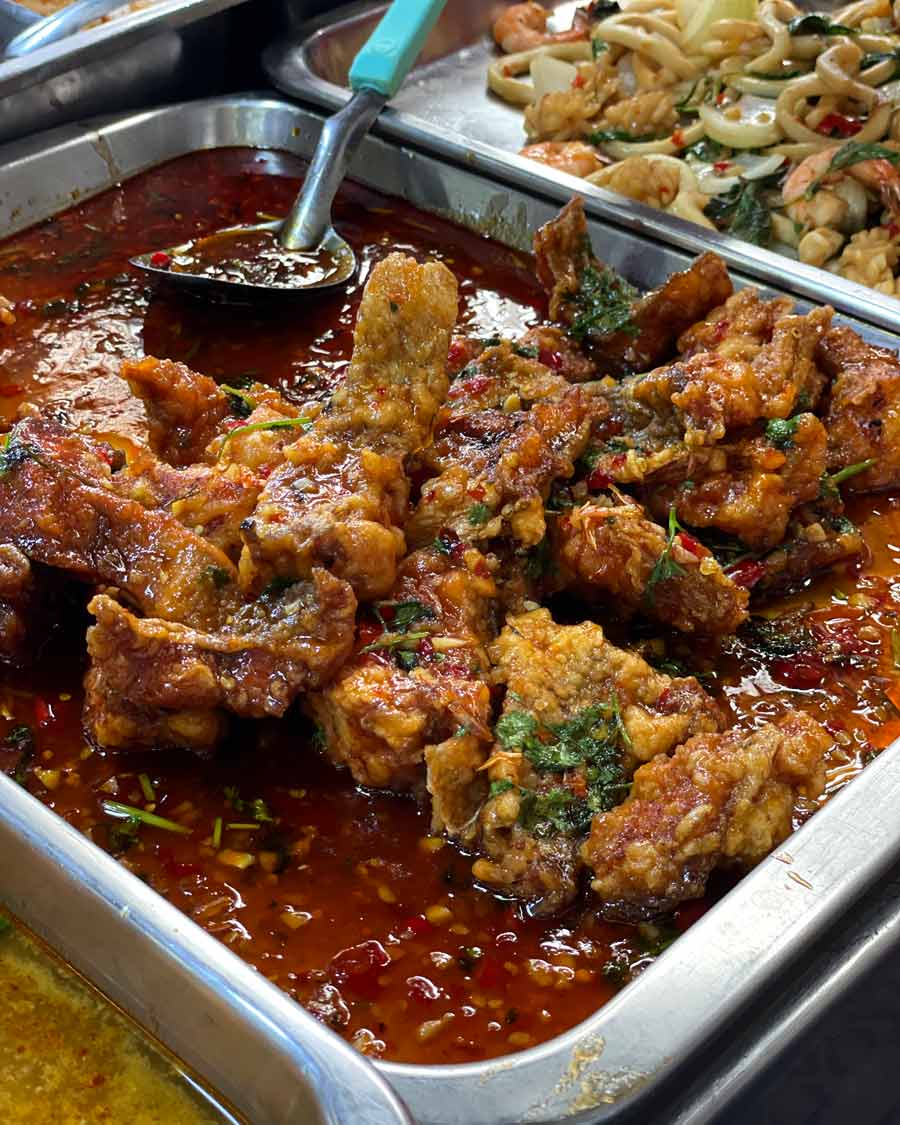
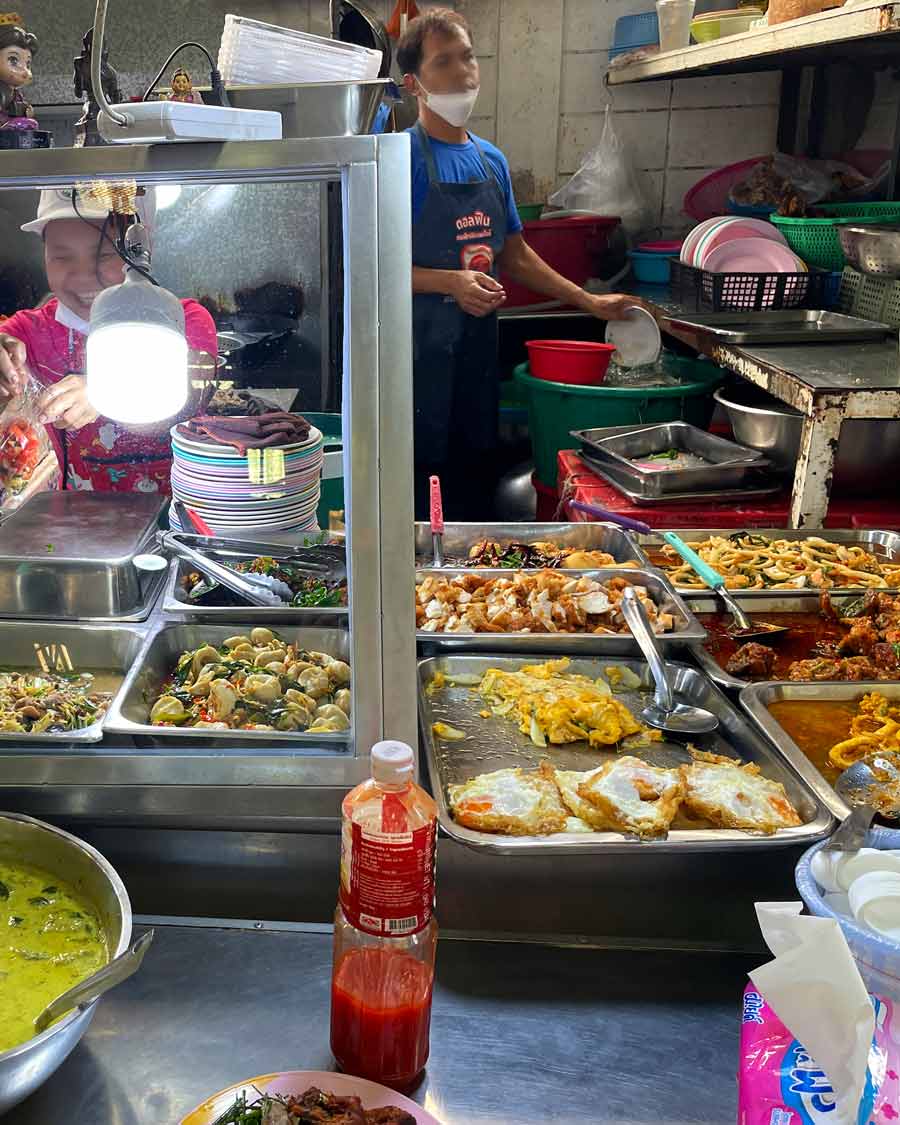
What you need to make Chilli Lime Fish
Here’s what you need to make this.
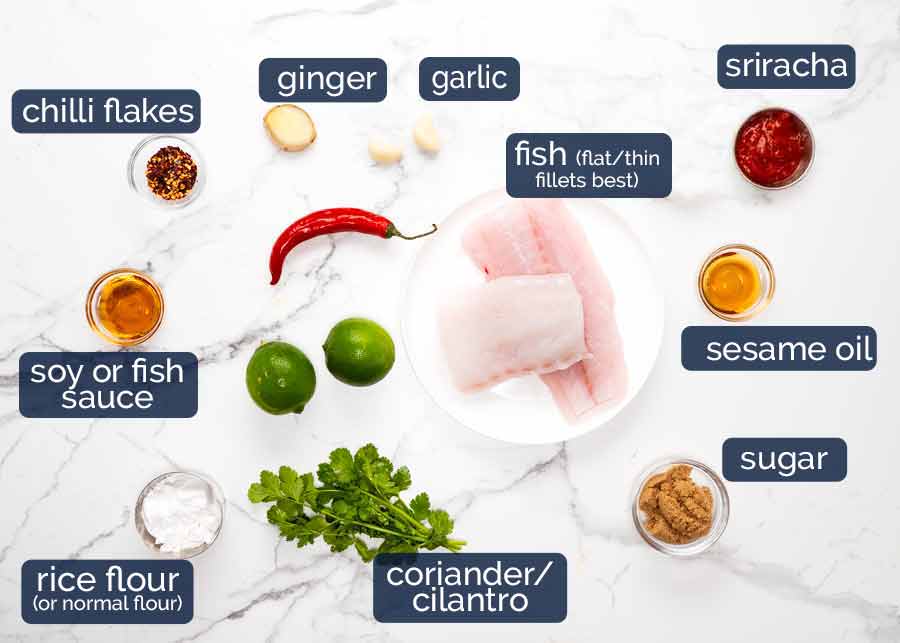
-
Fish – Use any thin-ish white fish fillets that are ideally of even thickness so that each piece cooks through in the same time.
– Thinner is better for this recipe so we get maximum surface area for the tasty sauce to cling to, with the bonus that it cooks quickly. Aim for fillets around 1cm / 0.4″ thick.
– Thicker pieces: If your fish is 2.5cm / 2″ or thicker, just split them in half horizontally to form thinner pieces.See the box below for suggested fish. For most large fish, the shape of fillets will vary depending what part of the fish it is cut from. Whatever fish you choose, look for the thinner pieces (usually the tail end).
-
Garlic and ginger – Finely minced with a knife so you get tasty little golden bits and flavour that infuses into the sauce. Don’t grate or mince them using a garlic press. It becomes wet and pasty, and will burn because it’s too fine!
-
Lime – Because we’re making chilli LIME fish here. 😂 Reflecting the Thai influence in this dish, the sharp zingy-ness pairs fabulously with spiciness and brings brightness to the sauce.
-
Sriracha – This popular Asian chilli sauce plays a few roles in this recipe. It adds spiciness but also flavour because it is has other ingredients in it other than chilli such as vinegar and garlic. Because it has a thickness like ketchup, it also helps thicken the sauce.
Concerned about the spiciness of this dish? See note 4 of the recipe for how to control or reduce it. But note! I am a spice wuss myself. I make out like I am tough. But really, I cannot handle too much heat!
-
Chilli flakes (red pepper flakes) – This is the other ingredient that adds some heat to this dish. I like to sauté it with the garlic and ginger so it flavours the oil.
-
Soy sauce – This is the saltiness in the sauce. Use light soy or all-purpose soy sauce, not dark soy sauce as the colour and flavour is too intense. More on different types of soy sauces here. Fish sauce can also be used. It will dial up the savouriness in the sauce even more (but I think there’s enough with soy sauce which is why it’s the base ingredient).
-
Brown sugar – For the sweetness in the sauce. It also thickens it to make it syrupy.
-
Sesame oil – For a hint of tasty sesame flavour that’s more interesting than flavourless oil.
-
Rice flour – Easily substituted with plain/all-purpose flour or cornflour/cornstarch, the purpose of this is to create a light crust on the surface of the fish that the sauce clings to. It’s not for crispiness; while the fish is crispy straight out of the pan, once it’s sauced up it loses crispiness.
-
Coriander/cilantro and fresh chilli – These are optional, for garnishes.
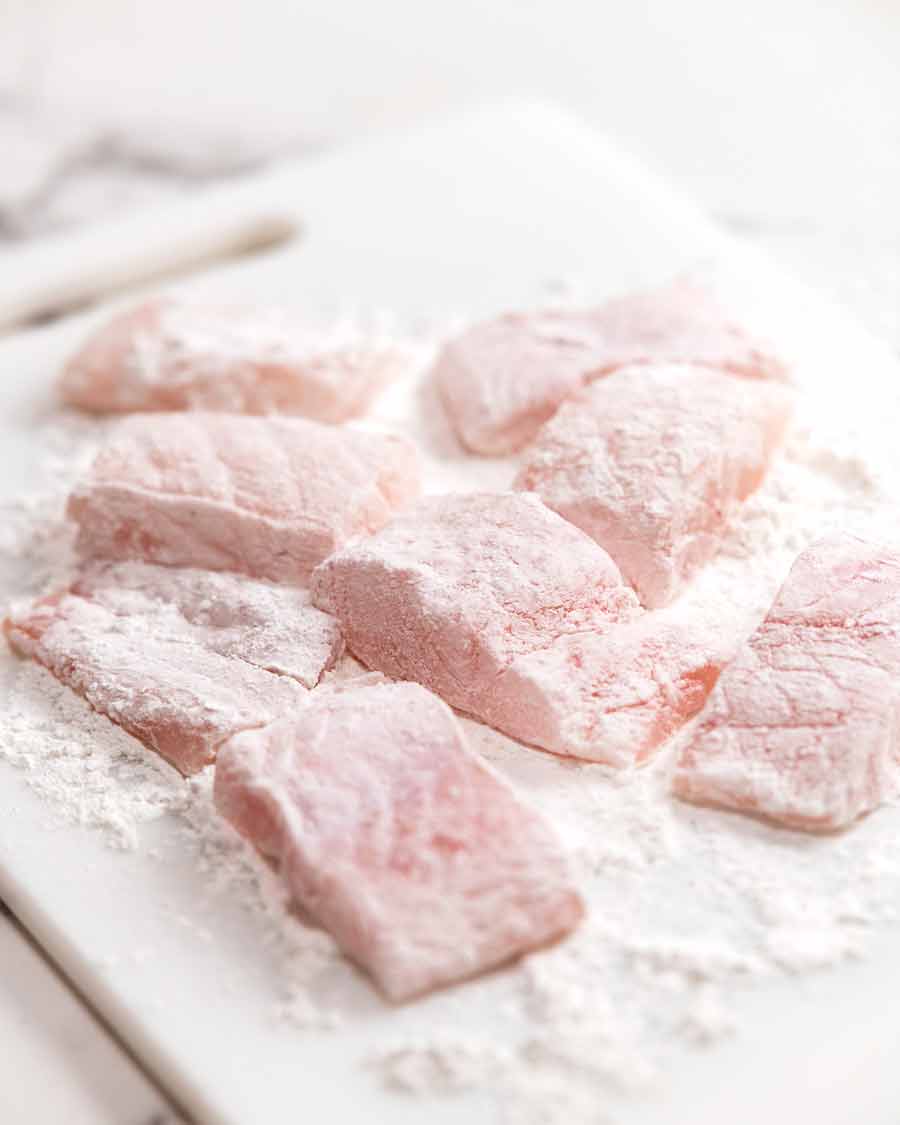
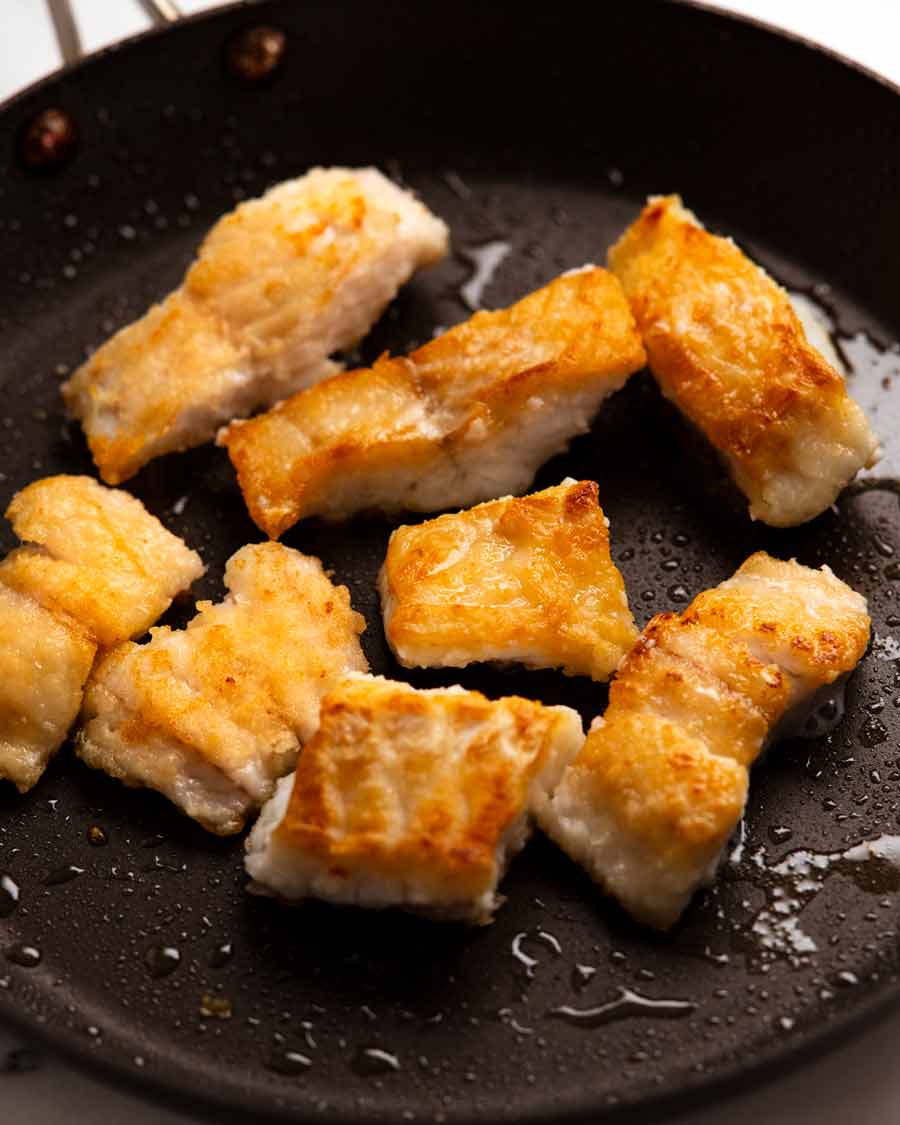
Best fish to use for this recipe
This recipe can be used with any white fish suitable for pan-frying, or even salmon and trout. here are some suggestions:
-
Australia: Barramundi, Blue eye cod / trevalla, Basa, Bream, Cod, Flathead, Flounder, Jewfish, John Dory, Ling, Monkfish / Stargazer, Ocean perch, Trout (ocean and river), Orange roughy, Salmon, Whiting.
-
US: Above and below listed, plus Alaskan pollock, Catfish, Halibut, Pangasius, Tilapia, Mahi-mahi.
-
UK: Above listed, plus Dover sole, Haddock, Hake, Pollack, Sea bass.
Fish to avoid
I recommend avoiding:
-
Fish that dry out easily when cooked – Like swordfish, tuna, bonito, kingfish, marlin. Unless you’re extremely careful they can become dry inside. I feel these fish are (mostly) better in raw/rare form such as Ceviche, Poke Bowls, Tartare.
-
Oily, strong-tasting fish – Like mackerels, mullet and sardines. While it will work just fine, it’s not so common to serve those types of fish with sauces like this. Fresher, vibrant sauces are better, like these Italian-style Crusted Sardines.
How to make Chilli Lime Fish
Once you’ve prepared the ingredients, this is terrifically fast to cook – 3 minutes for the fish and 3 minutes for the sauce.
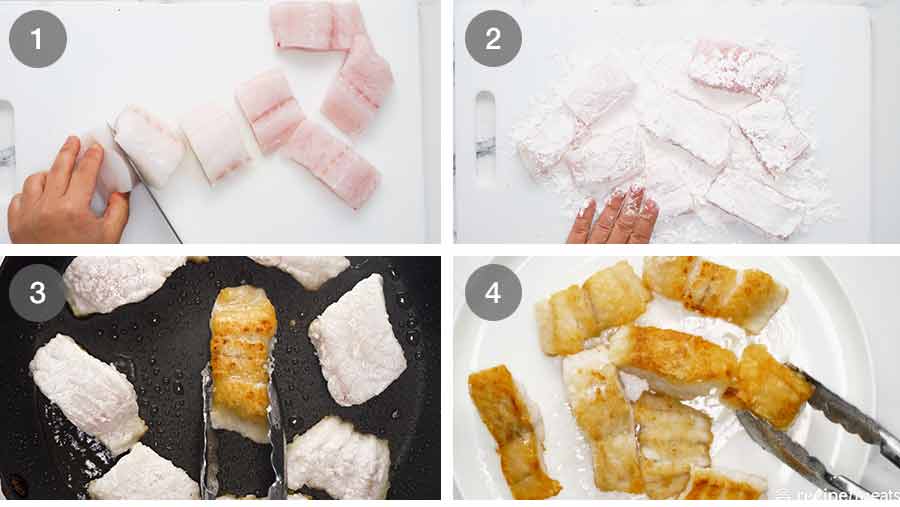
-
Cut the fish into pieces around 5cm / 2″ squares or rectangles. No need to be exact here, we just want to cut the fish into pieces rather than cooking one large fillet so we get more surface area for maximum sauce-coating potential!
-
Season and dust – Sprinkle the fish with salt then dust with rice flour (or cornflour/cornstarch or ordinary flour). Shake off the excess before cooking.
-
Pan fry – Heat oil in a non-stick pan then cook the fish until golden on both sides.
– Thin fillets around 1 cm /2/5″ thick with take around 1 1/2 minutes on each side.
– Thicker fillets around 1.5 – 1.75cm / 0.6 – 0.75″ thick 2 minutes each side) or until the internal temperature is 55°C / 130°F. Remove fish onto a plate and set aside. -
Remove the fish to a plate and set aside while you make the sauce. Don’t worry if the fish cools down, it will warm back up when we add it to the sauce later.
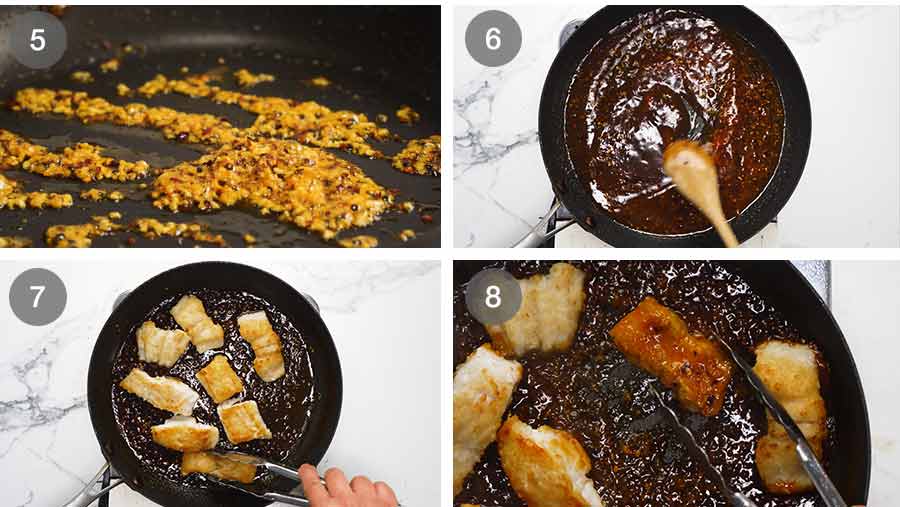
-
Sauté aromatics – Return the same pan to the stove and reduce to medium heat. Heat the sesame oil then sauté the garlic, ginger and chilli flakes for just 20 seconds until the garlic becomes golden. Be prepared for tasty smells here!!
-
Sauce – Add all the other Sauce ingredients except the lime. Then simmer it for a 2 minutes until it becomes syrup. Finally stir the lime (to preserve its freshness).
-
Return fish – Once the sauce is syrupy, return the fish to the sauce.
-
Turn the fish to coat in the sauce. At this stage, the residual heat in the pan will also re-warm the fish if it cooled down.
Then that’s it! Ready to serve.
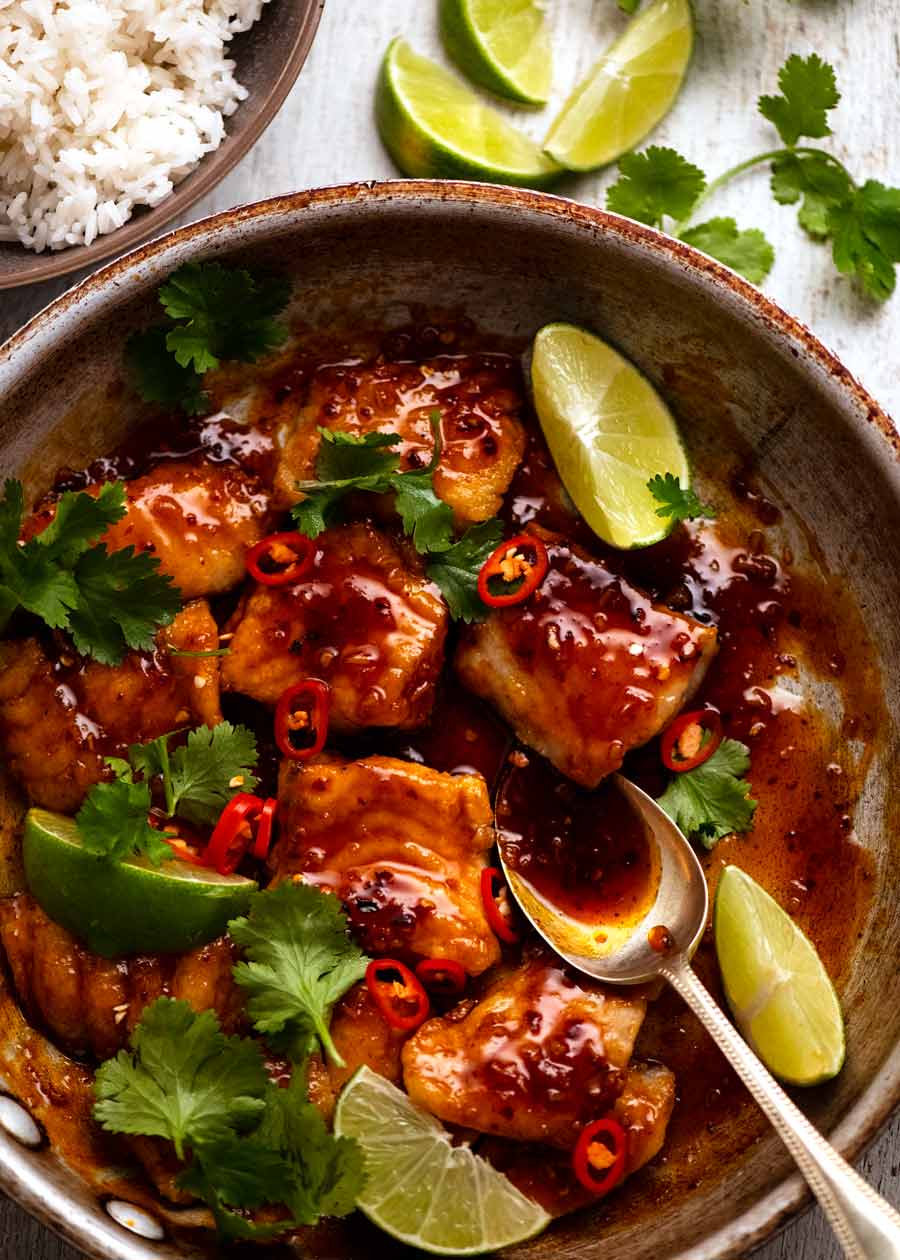

What I serve with Chilli Lime Fish
As in Thailand, this is a dish made for serving over rice to soak up the tasty sauce. I like jasmine rice for its fragrance (and as a nod to the Thai influence on this dish) but you could also use plain white rice, brown rice or, for a low-carb option, cauliflower rice.
Also, vermicelli noodles makes a good quick no-cook option.
It’s pictured in post with a side of steamed baby pak choi tossed with Asian sesame dressing. That dressing is one of my Asian food staples. It’ s super-quick to make (just 4 ingredients) and highly versatile. Use it for leafy greens or to make any plain steamed greens a whole lot more interesting. Think broccoli, carrots, even peas! – Nagi x
Watch how to make it
Hungry for more? Subscribe to my newsletter and follow along on Facebook, Pinterest and Instagram for all of the latest updates.
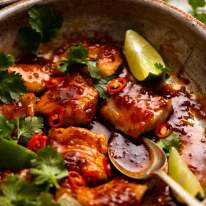
Chilli Lime Fish
Prep: 10 mins
Cook: 8 mins
Mains
Modern Asian, Thai-ish
Servings2
Tap or hover to scale
Instructions
Fish:
-
Dust fish – Sprinkle with salt, dust with rice flour, shake off excess.
-
Cook fish – In a non-stick skillet, heat oil over medium-high heat. Cook the fish until golden on each side then remove to a plate.
-
Fish cooking times – Thin fillets 1 cm / 2/5″ thick: 1 1/2 minutes each side; thicker fillets 1.5 – 1.75cm / 0.6 – 0.75″ thick 2 minutes each side) or until the internal temperature is 55°C / 130°F. Remove fish to a plate and set aside.
Sauce:
-
Sauté aromatics – In the same pan, add sesame oil on medium heat. Cook garlic, chilli and ginger until golden – about 20 seconds.
-
Sauce – Add everything else except lime juice. Stir, simmer, then reduce until syrupy – about 2 minutes. Add lime juice and stir. (If sauce gets too thick, add water)
-
Coat fish – Return fish into sauce, turning to coat in the sauce. Garnish, then serve over rice! Pictured with steamed baby pan choy tossed with Asian Sesame Dressing.
Recipe Notes:
Thickness – Works best with thinnish fillets around 1cm / 0.4″ thick for maximum surface area. If your fish is around 2.5cm / 1″ or thicker, I suggest cutting it in half horizontally.
Cutting size – No need to be exact with size/shape. The idea is just smaller pieces to coat pieces all over in the sauce, rather than having 1 large fillet.
2. Rice flour gives the fish a light crust that the sauce clings to. Plain / all-purpose flour can be substituted, or cornflour/cornstarch – they are just not quite as crisp when pan-fried, that’s all (not a big deal as surface gets soggy once coated with sauce).
3. Garlic & ginger – Use a knife to mince, not a garlic press or grater which will make it wet and pasty so it will burn. We want lots of tiny little bits that we sauté until golden to infuse the sauce with flavour!
4. SPICINESS! 1 teaspoon chilli flakes + 2 tbsp sriracha is my default level which makes this pretty spicy but not blow-your-head-off.
Reduce spiciness: Better to reduce or skip chilli flakes than reduce sriracha. Sriracha is key for the sauce flavour and thickness so please do not reduce to less than 1 tbsp (start with that then add more if you can). I haven’t tried this with no spiciness, the sauce would need adjusting.
5. Soy sauce – Use light or all purpose soy sauce. More on different types of soy here.
6. Storage – Best eaten fresh though the cooked dish will be fine to consume for a further 2 to 3 days, keep in the fridge.
7. Nutrition per serving, assuming all sauce is consumed. Excludes rice.
Nutrition Information:
Calories: 806cal (40%)Carbohydrates: 42g (14%)Protein: 52g (104%)Fat: 48g (74%)Saturated Fat: 6g (38%)Polyunsaturated Fat: 11gMonounsaturated Fat: 21gTrans Fat: 1gCholesterol: 117mg (39%)Sodium: 2395mg (104%)Potassium: 191mg (5%)Fiber: 1g (4%)Sugar: 36g (40%)Vitamin A: 112IU (2%)Vitamin C: 31mg (38%)Calcium: 55mg (6%)Iron: 2mg (11%)
Life of Dozer
Oh Dozer! What an exciting life you’re leading – book signings, book talks, publicity events!
In fact, at the time this recipe gets published, Dozer will be at his first public appearance in front of 400 people for Kinokuniya bookstore in Sydney city.
My main concern? See below. It’s an actual serious risk!
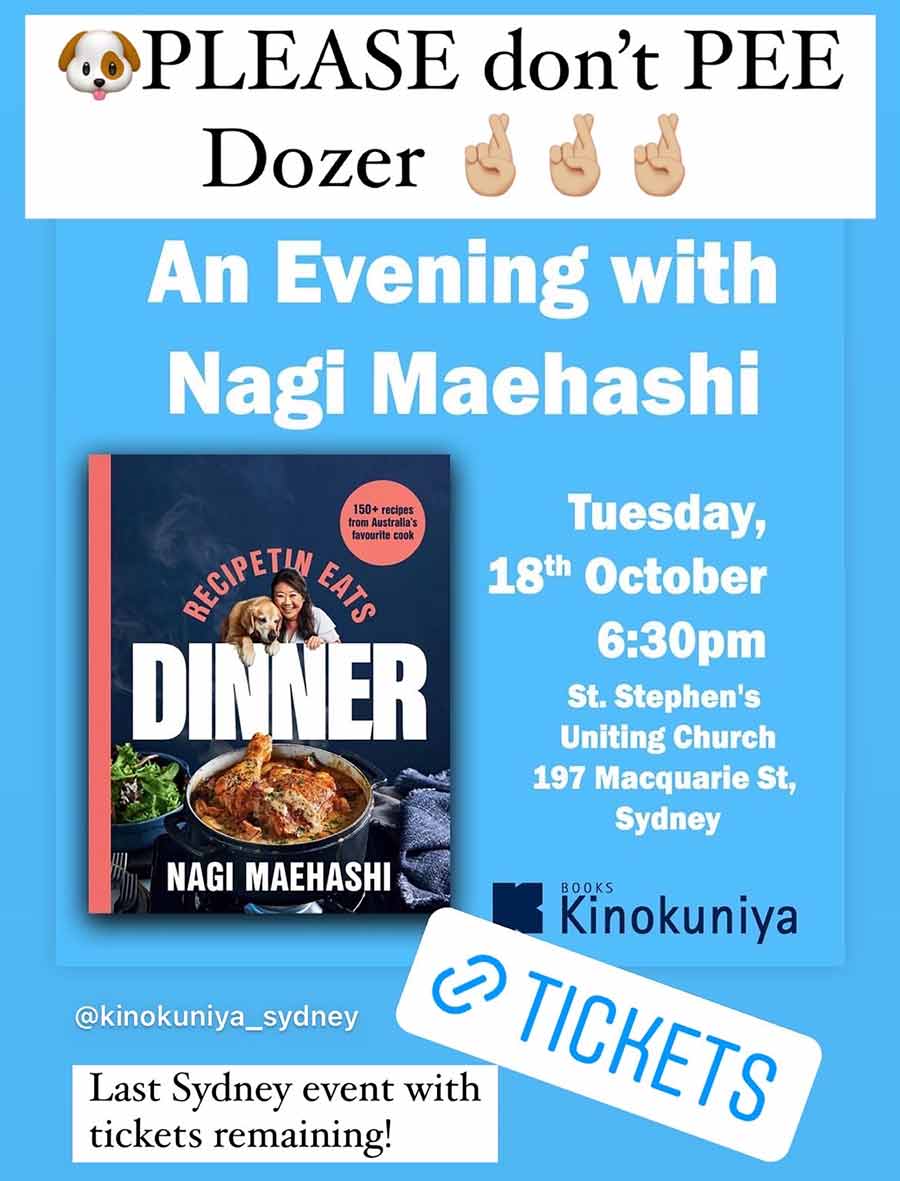







More Stories
Top 25 Culinary Terms Every Student Should Know
Methods Available For Food and Beverage Stocktaking
Fine-Dining Restaurants